Korean Parhyo Tea / Yellow Tea /
Fermented Tea
Nowadays far more popular than green tea because of its richer, sweeter, smoother taste, Parhyo Tea is popular with tea makers because of its relative ease of preparation.
Here are the basic steps as practiced by Master Hyoam in Gurye, just below Hwaeom-sa Temple.
1. The leaves are
allowed to wilt

The freshly picked leaves are left to wilt for almost 24 hours in the shade. By the end of that time the smell has already begun to grow more intense and fragrant. Usually, several kilograms of leaves are processed at once.
2. Rubbing the leaves
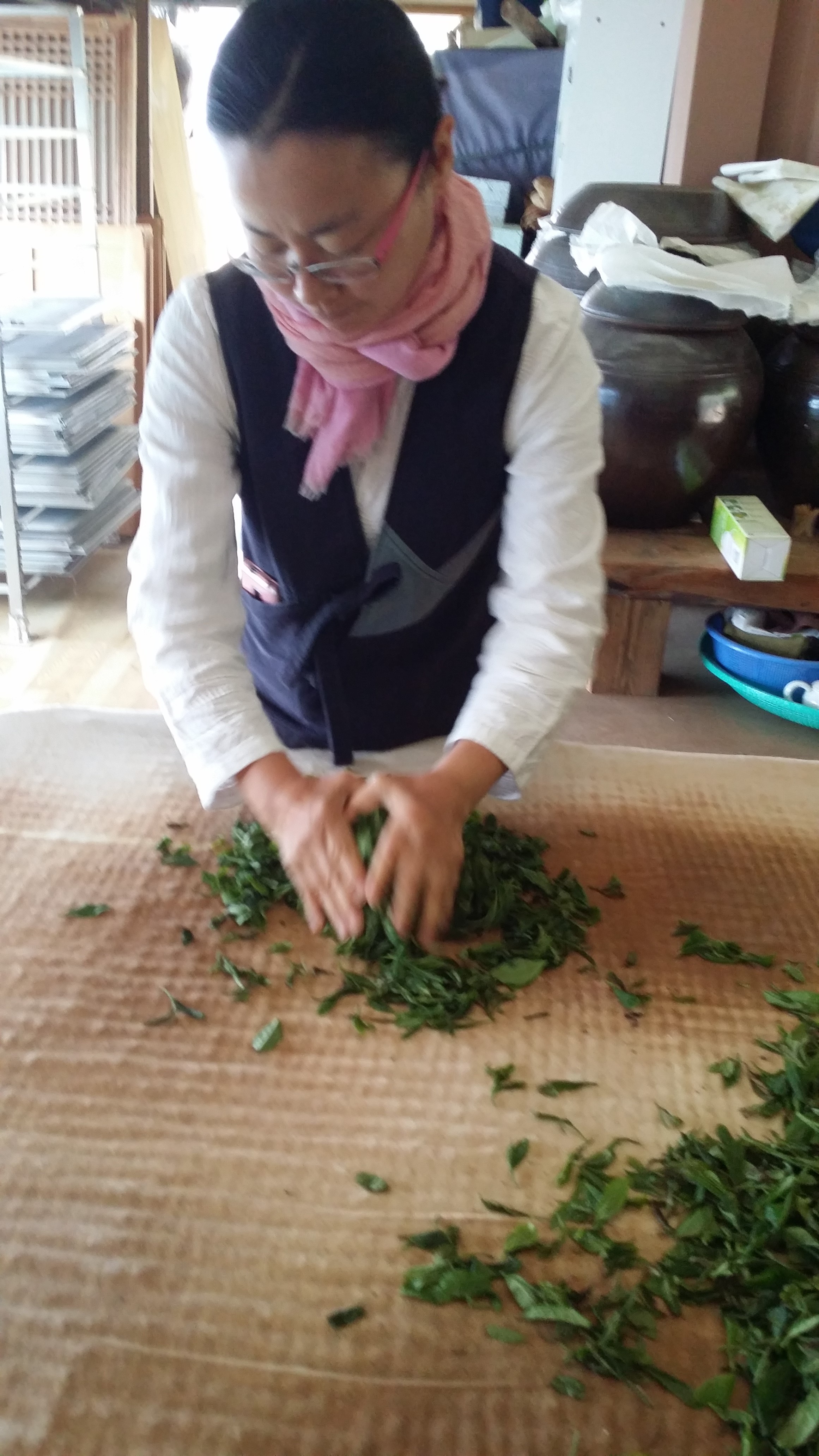

The leaves are rubbed
and rolled cold on a table covered with a coarse cloth
or a rice-straw mat. Usually several rubbers pass the
batches of rubbed leaves from one to another to ensure
that all are equally thoroughly rubbed. The rubbing
exposes the juices in the leaves to the air for more
thorough oxidation. By the end of the rubbing, the
mass of leaves is really moist and has to be sifted
with the fingers to prevent it clumping together.
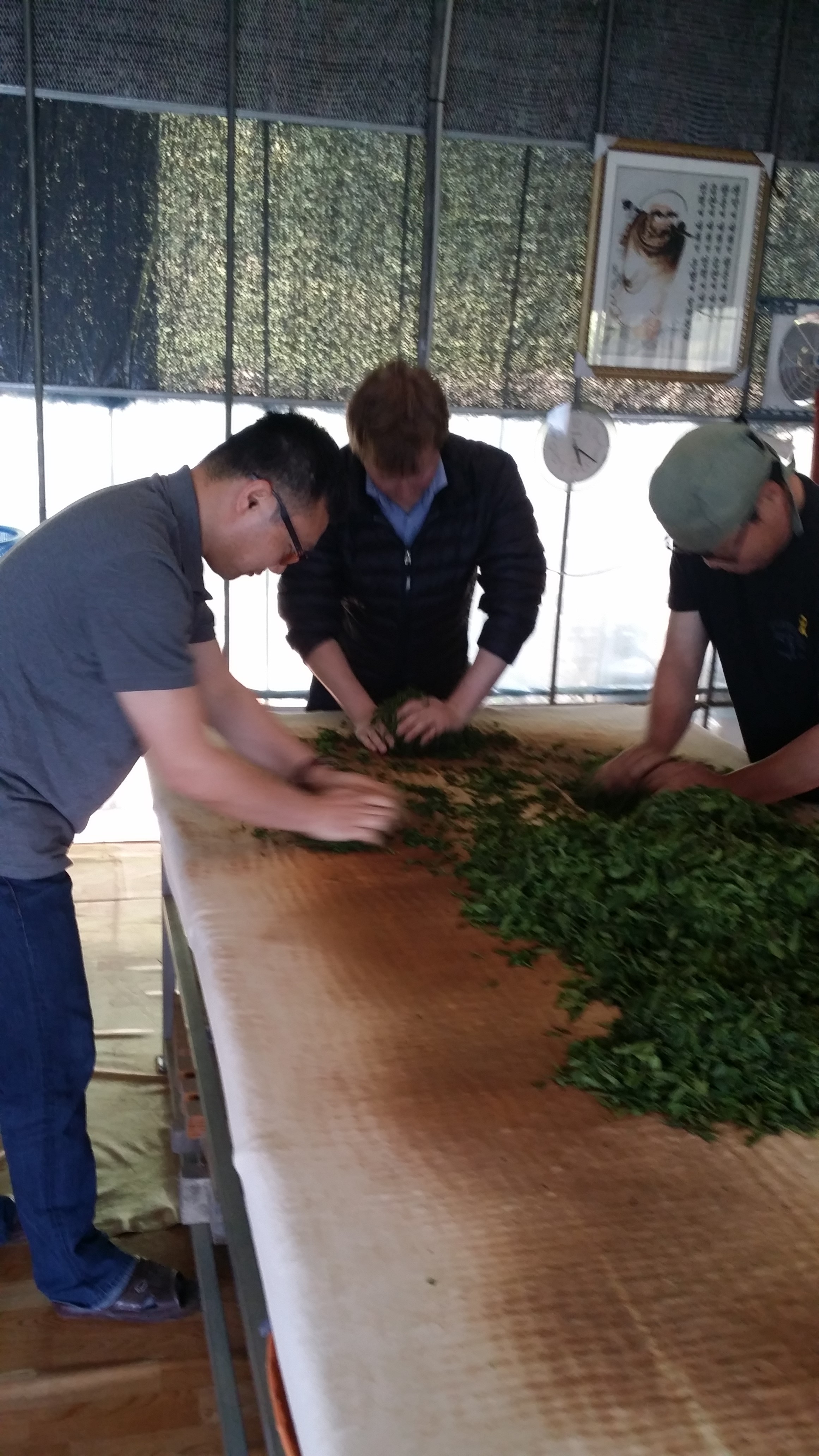

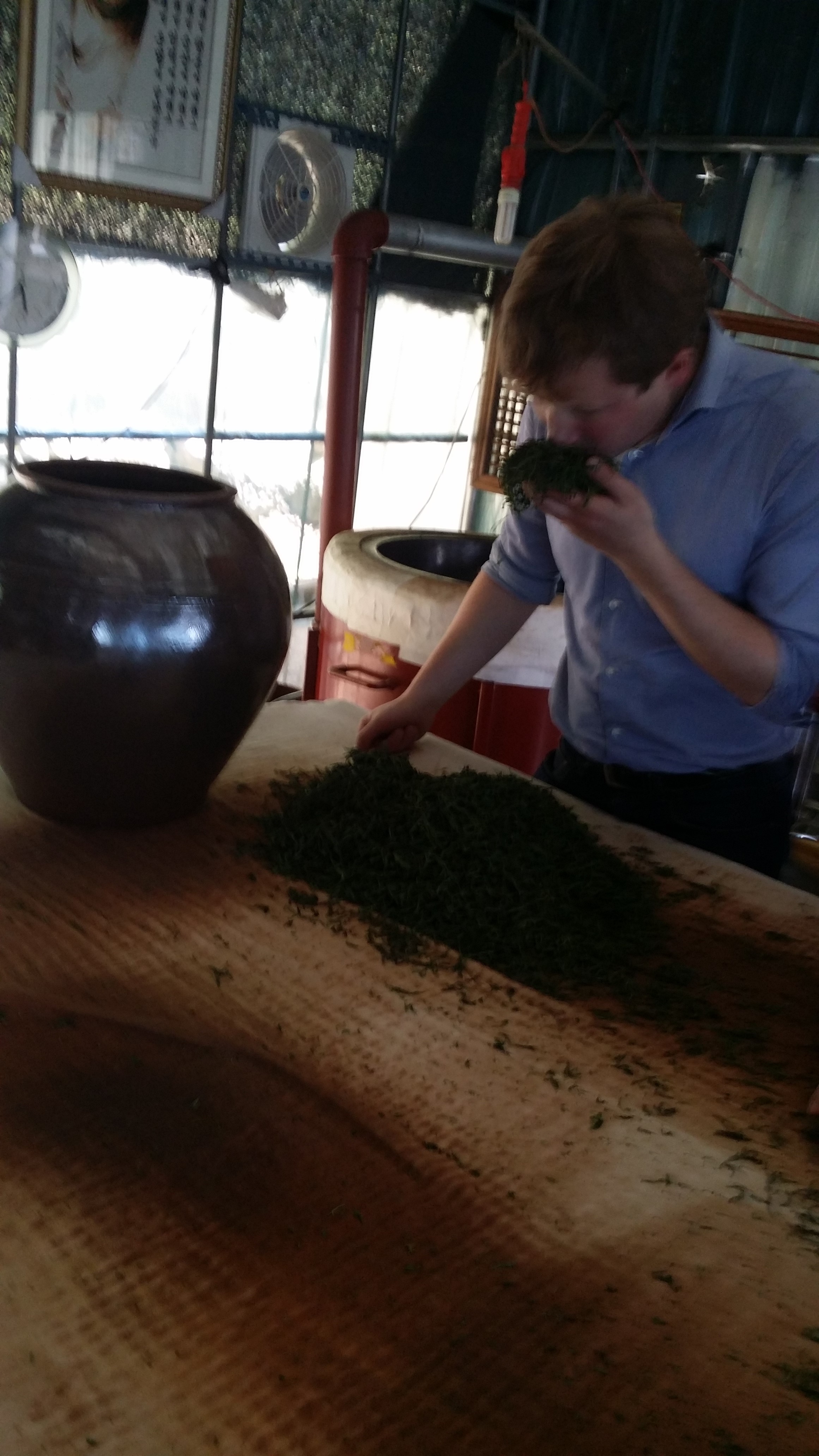
3. Fermentation

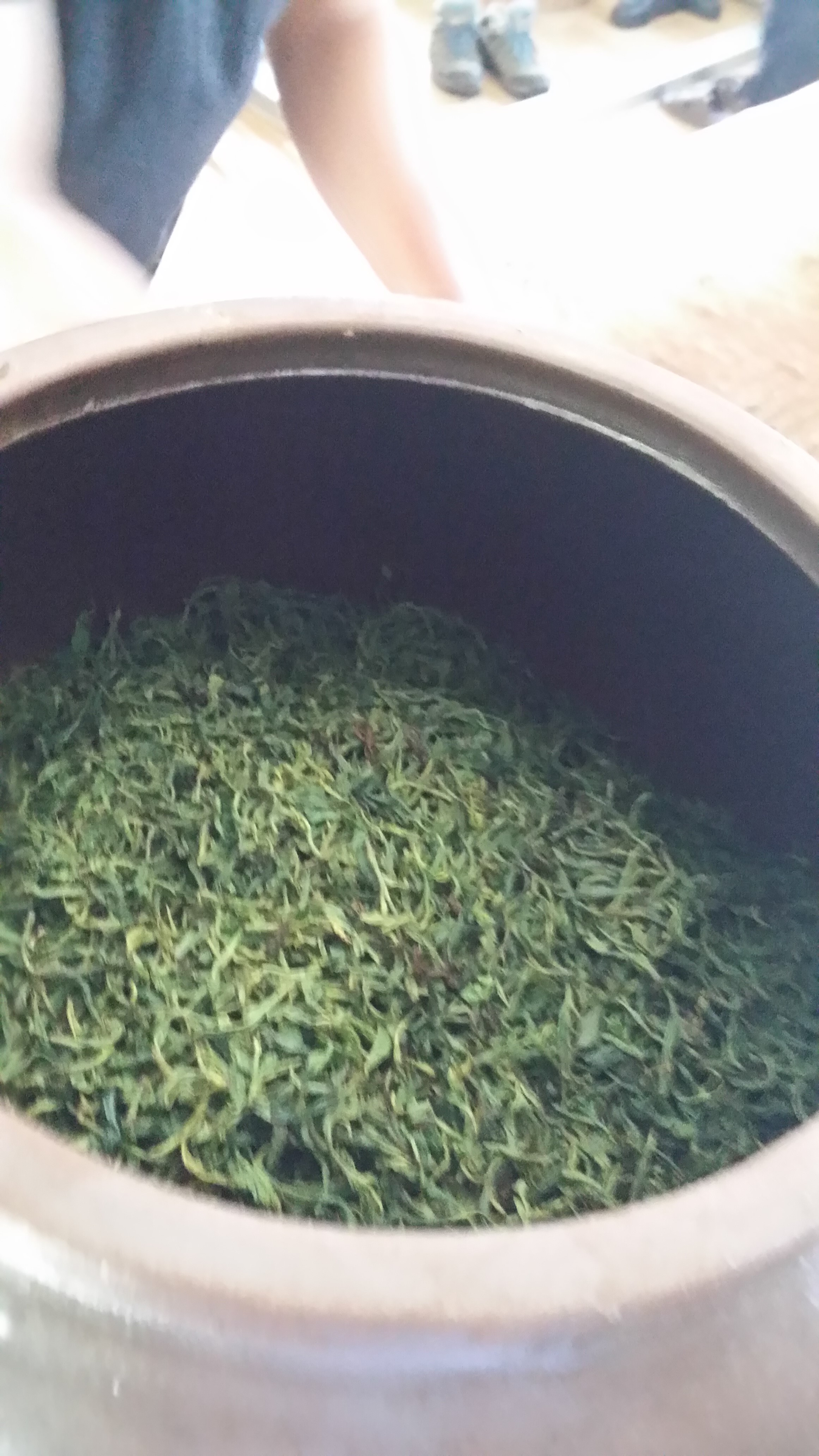



3. Fermentation

The
fermentation is done in a pot (hangari) of
traditional onggi ware. The tea is lightly
sprinkled into the pot, not pressed down

Then the pot
is wrapped in a blanket to retain the heat and
placed on a heated ondol floor (about 45
degrees C) for some 14 hours, during which
time the process of oxidation continues while
enzymes operate a form of fermentation.
4. Drying
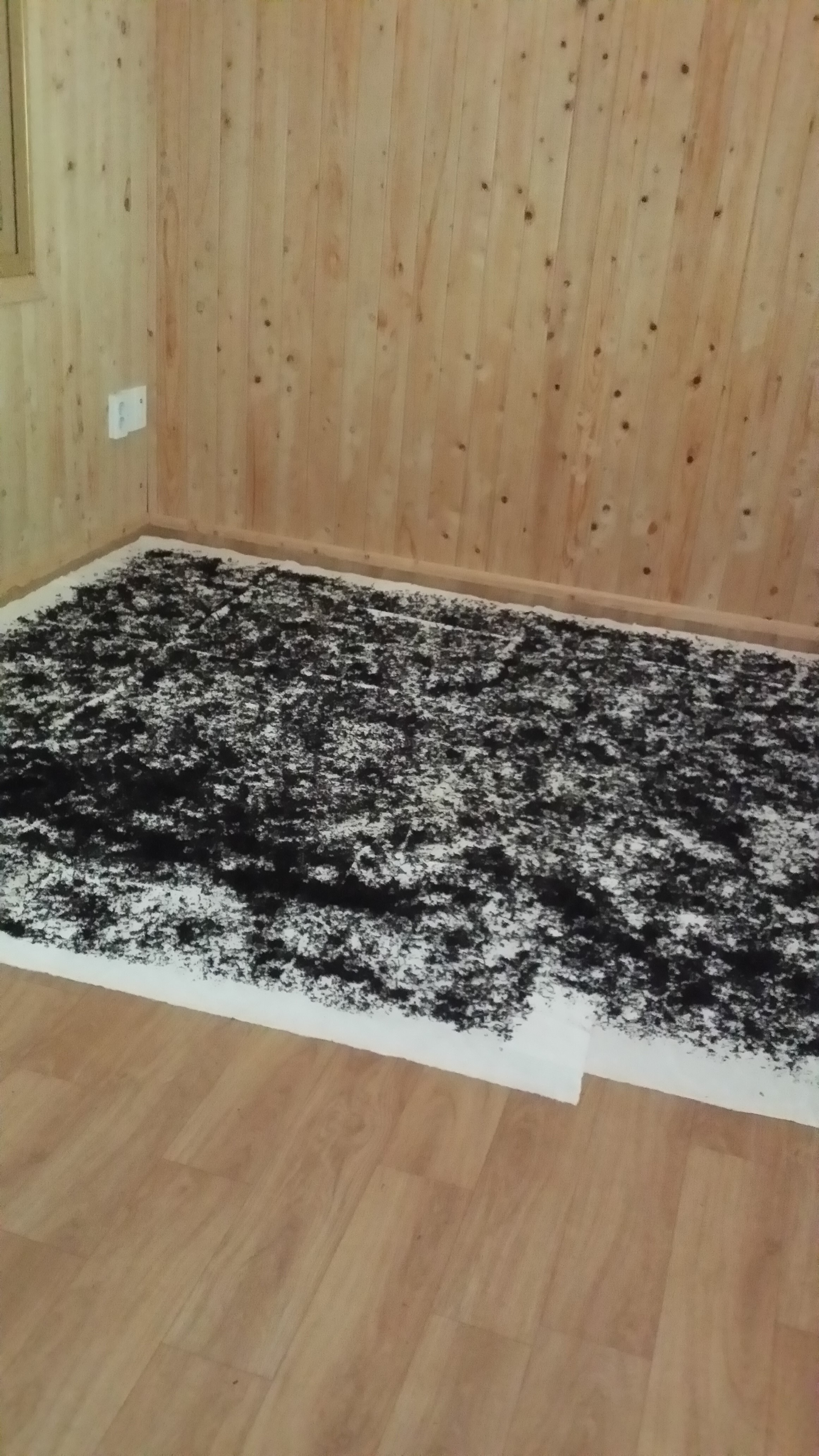

The
fermented leaves are sprinkled thinly onto
sheets of paper spread on the same heated
ondol in a darkened room and allowed to
dry completely for 2-3 days. At the end of that time they
are allowed to go on resting for a while
before packing.

5. Packing
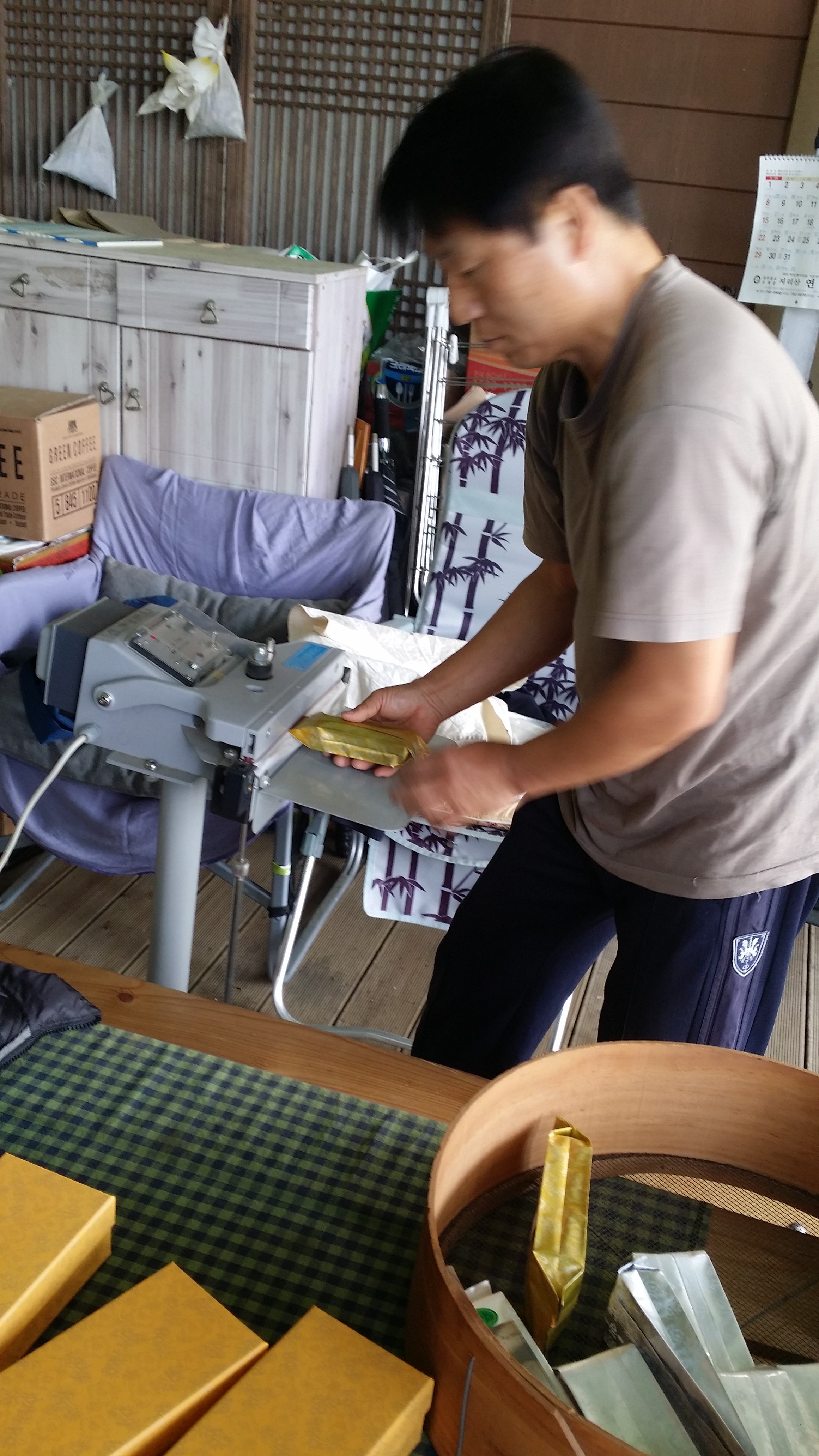

5. Packing

Korean
tea is usually sealed in packs of 50
or 80 grams. Vacuum packs are almost
never found in Korea (they are very
popular in China). Parhyo tea can also be
kept in a covered hangari (pot) stored
in a dry place, while green tea should
always be kept in tightly closed pack
to avoid the loss of its fragrance.
6.
Brewing
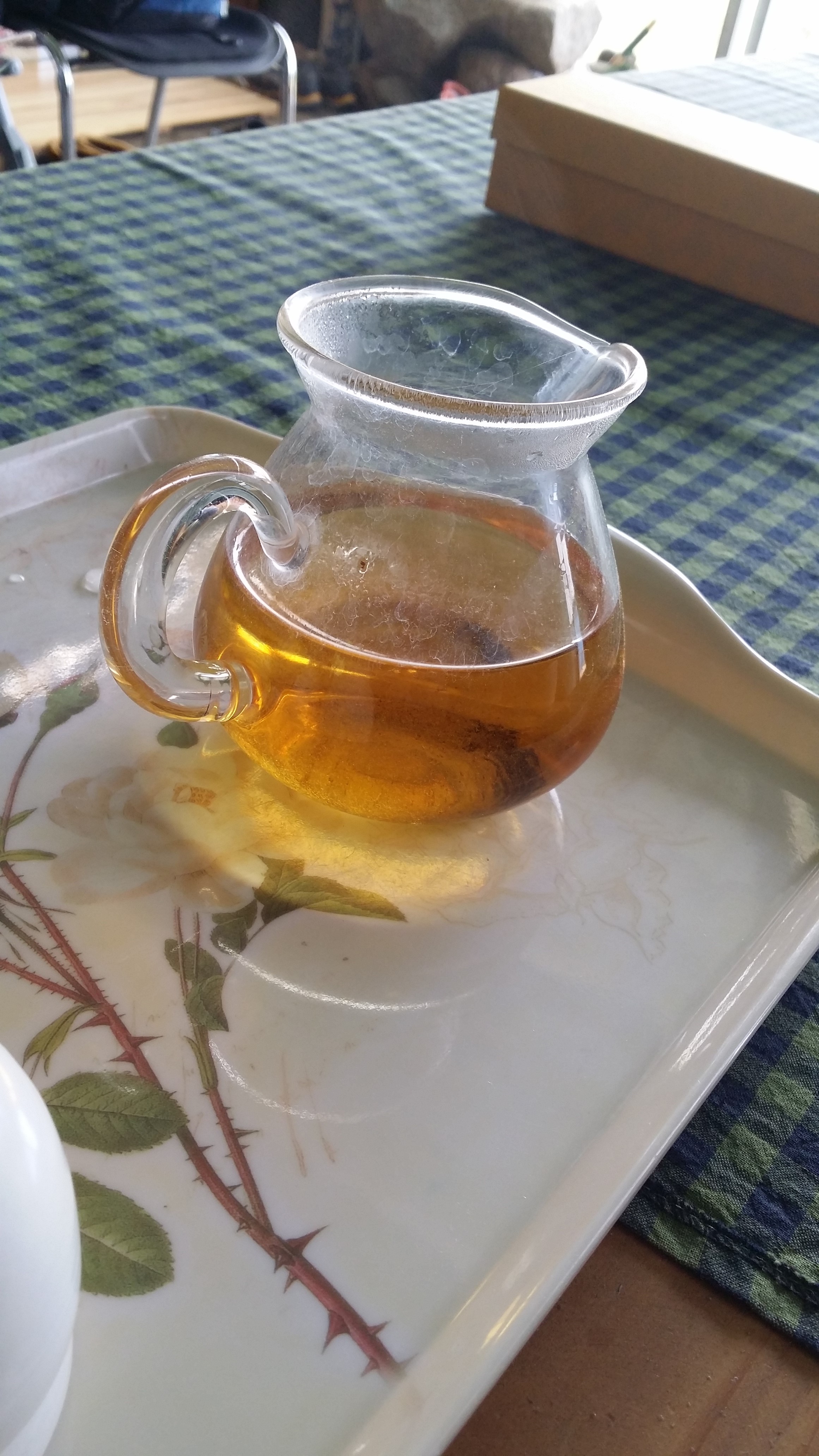

The
water used to brew parhyo tea can
be nearly boiling, there is no
need to let it cool. The color is
golden, the taste sweet, nutty or,
in the best cases, flowery. The
tea allows multiple brews without
losing its quality.